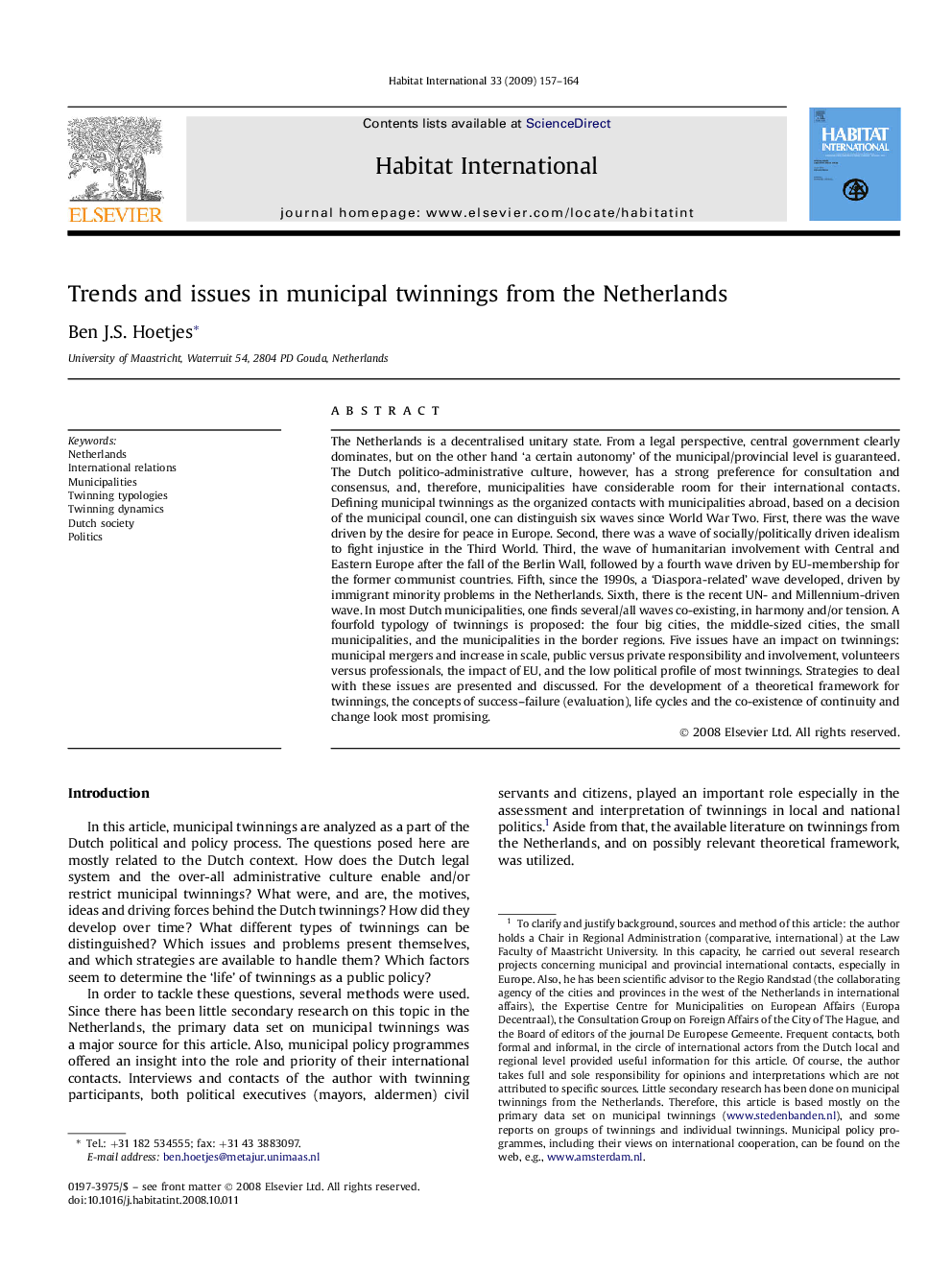| Article ID | Journal | Published Year | Pages | File Type |
|---|---|---|---|---|
| 1048369 | Habitat International | 2009 | 8 Pages |
The Netherlands is a decentralised unitary state. From a legal perspective, central government clearly dominates, but on the other hand ‘a certain autonomy’ of the municipal/provincial level is guaranteed. The Dutch politico-administrative culture, however, has a strong preference for consultation and consensus, and, therefore, municipalities have considerable room for their international contacts. Defining municipal twinnings as the organized contacts with municipalities abroad, based on a decision of the municipal council, one can distinguish six waves since World War Two. First, there was the wave driven by the desire for peace in Europe. Second, there was a wave of socially/politically driven idealism to fight injustice in the Third World. Third, the wave of humanitarian involvement with Central and Eastern Europe after the fall of the Berlin Wall, followed by a fourth wave driven by EU-membership for the former communist countries. Fifth, since the 1990s, a ‘Diaspora-related’ wave developed, driven by immigrant minority problems in the Netherlands. Sixth, there is the recent UN- and Millennium-driven wave. In most Dutch municipalities, one finds several/all waves co-existing, in harmony and/or tension. A fourfold typology of twinnings is proposed: the four big cities, the middle-sized cities, the small municipalities, and the municipalities in the border regions. Five issues have an impact on twinnings: municipal mergers and increase in scale, public versus private responsibility and involvement, volunteers versus professionals, the impact of EU, and the low political profile of most twinnings. Strategies to deal with these issues are presented and discussed. For the development of a theoretical framework for twinnings, the concepts of success–failure (evaluation), life cycles and the co-existence of continuity and change look most promising.
